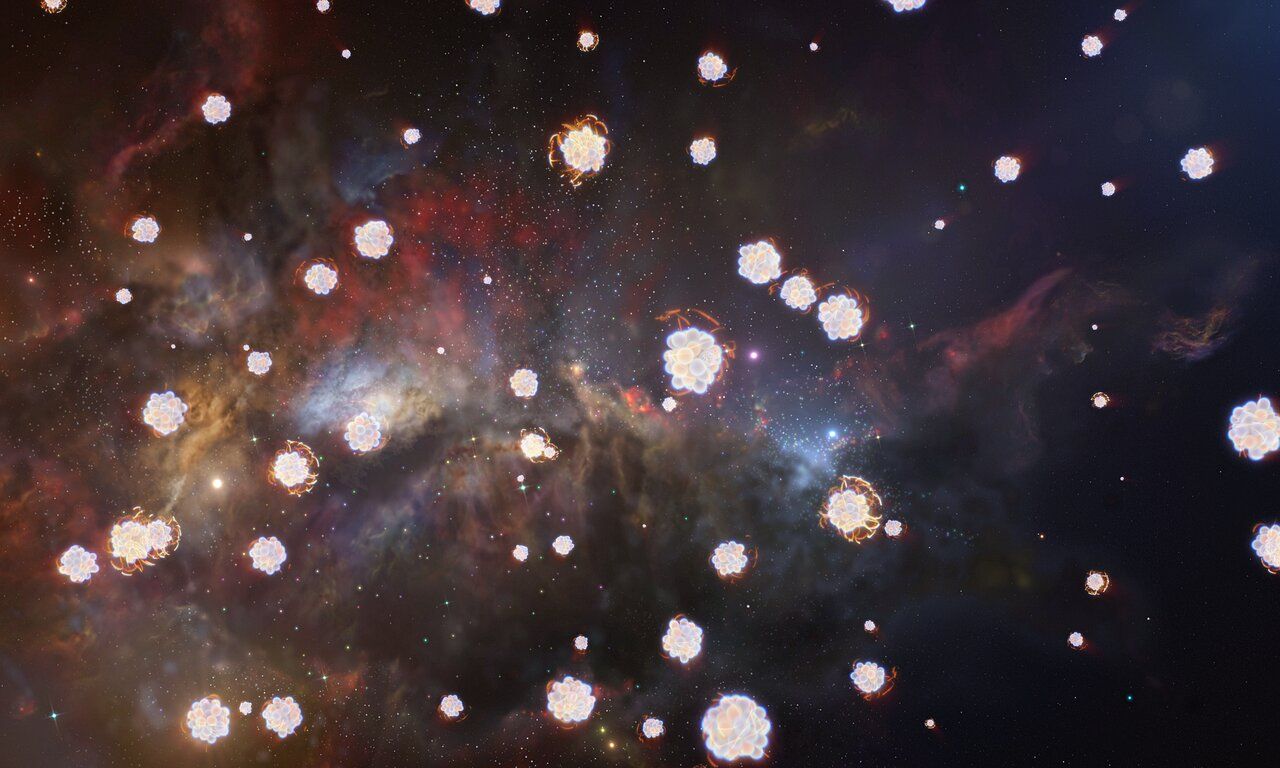The history of the first stars of our universe it resembles, and a lot, that of a ‘rock star’. They were born out of nowhere, closed into something super massive and suddenly appeared leaving behind a powerful footprint that would serve to inspire future generations. In the world of astrophysics, in the same way that it happens in the world of music, to understand what surrounds us it is essential to understand where we come from. That is why what you will read below is so important: a team of European astronomers has achieved capture the ‘footprints’ left by the first stars of our cosmos.
To understand the importance of this discovery, you have to take a step back and travel neither more nor less than about 13.5 billion years back in time. At that time, the universe was still in its infancy (that is, it was barely 10% to 15% of its current age). It was then that, in the midst of so much darkness, the first stars were born. They were very simple stars (only composed of hydrogen and helium) but they were hundreds of times more massive than our own sun.
‘Live fast die young’
These first stars followed the ‘live fast, die young’ philosophy (‘Live fast die young’). First they shone very brightly and then, in the height of their youth, exploded in powerful supernovae and they went out forever. The explosion of the first stars ended up producing heavier chemical elements (such as the carbon, oxygen and magnesium that coated their outermost shell) which, in turn, were left behind. soaked in gas clouds that at that time already existed in the universe.
«This is the first time that it has been possible to identify the chemical fingerprint of these explosions»
andrea saccardi
The finding presented this Wednesday in the ‘Astrophysical Journal’ is exactly this. Thanks to the European Southern Observatory (ESO), a international team of astronomers has managed to detect the ‘chemical signature’ left by the explosion of the first stars in the universe in three very distant gas clouds. «This is the first time that it has been possible to identify the chemical footprint of these explosions,» he explains. andrea saccardiof the Paris Observatory (PSL) and first author of this work.
relics of the big bang
Related news
As explained by the scientists who have led this work, the three gas clouds that are the protagonists of this study have exactly the same chemical composition that would be expected to be found after the explosion of the first stars in the cosmos. The detection of these chemical signatures, as explained by the astrophysicist Stephanie Salvadori, not only gives clues to these explosions but also allows us to study how the first stars in the universe were. «Primordial stars can be studied indirectly by detecting the chemical elements that they dispersed in their environment after their death», explains this researcher from the University of Florence and co-author of this work.
«Primordial stars can be studied indirectly by detecting the elements that dispersed after their death»
The remains of these stars are also some true relics of the big bang. In other words, it provided a new clue to understand how the origin of our universe was. Thanks to the chemical elements that were generated after the explosion of the first stars, what experts know as second generation stars. «They were formed from the ‘ashes’ of the first ones,» they explain. «This study has found the ashes of the early universe and, in doing so, has added another piece to this puzzle about the cosmos,» adds Salvadori.

